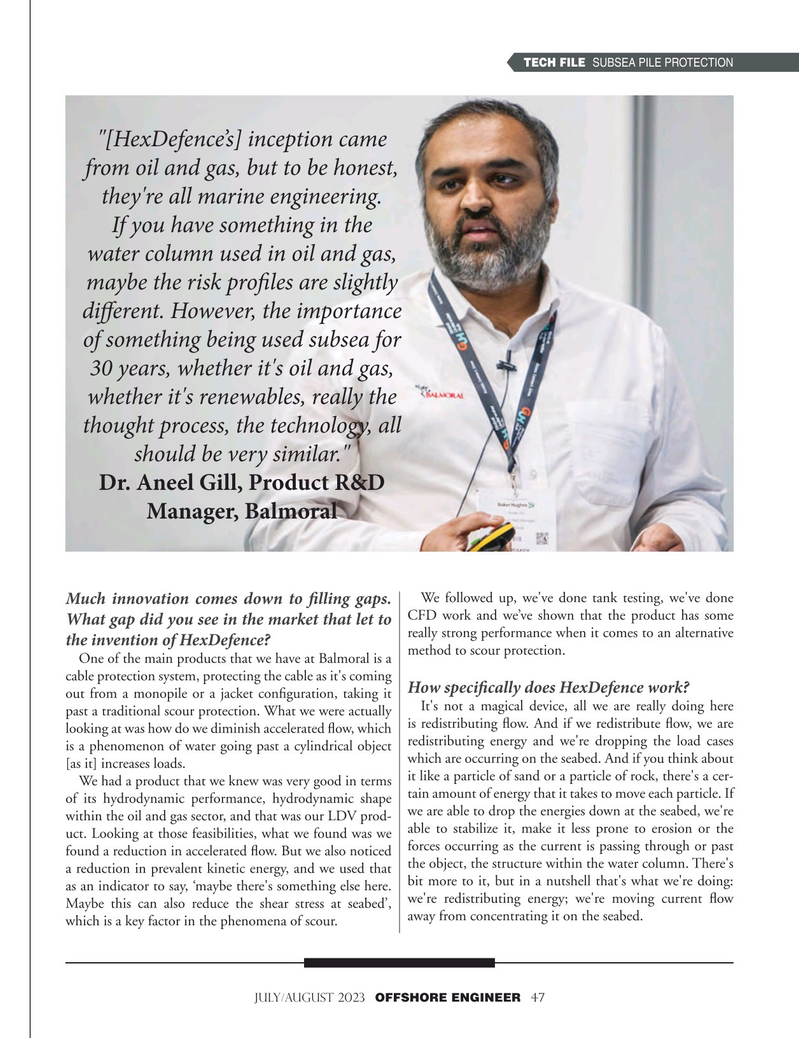
Page 47: of Offshore Engineer Magazine (Jul/Aug 2023)
Read this page in Pdf, Flash or Html5 edition of Jul/Aug 2023 Offshore Engineer Magazine
TECH FILE SUBSEA PILE PROTECTION "[HexDefence’s] inception came from oil and gas, but to be honest, they're all marine engineering.
If you have something in the water column used in oil and gas, maybe the risk profles are slightly diferent. However, the importance of something being used subsea for 30 years, whether it's oil and gas, whether it's renewables, really the thought process, the technology, all should be very similar."
Dr. Aneel Gill, Product R&D
Manager, Balmoral
We followed up, we've done tank testing, we've done
Much innovation comes down to flling gaps.
CFD work and we’ve shown that the product has some
What gap did you see in the market that let to really strong performance when it comes to an alternative the invention of HexDefence?
method to scour protection.
One of the main products that we have at Balmoral is a cable protection system, protecting the cable as it's coming
How specifcally does HexDefence work?
out from a monopile or a jacket confguration, taking it
It's not a magical device, all we are really doing here past a traditional scour protection. What we were actually looking at was how do we diminish accelerated fow, which is redistributing fow. And if we redistribute fow, we are is a phenomenon of water going past a cylindrical object redistributing energy and we're dropping the load cases which are occurring on the seabed. And if you think about [as it] increases loads.
We had a product that we knew was very good in terms it like a particle of sand or a particle of rock, there's a cer- of its hydrodynamic performance, hydrodynamic shape tain amount of energy that it takes to move each particle. If we are able to drop the energies down at the seabed, we're within the oil and gas sector, and that was our LDV prod- uct. Looking at those feasibilities, what we found was we able to stabilize it, make it less prone to erosion or the found a reduction in accelerated fow. But we also noticed forces occurring as the current is passing through or past a reduction in prevalent kinetic energy, and we used that the object, the structure within the water column. There's as an indicator to say, ‘maybe there's something else here. bit more to it, but in a nutshell that's what we're doing:
Maybe this can also reduce the shear stress at seabed’, we're redistributing energy; we're moving current fow away from concentrating it on the seabed.
which is a key factor in the phenomena of scour.
july/august 2023 OFFSHORE ENGINEER 47

 46
46

 48
48